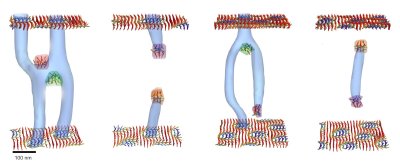Researchers confirm dynamics of skyrmion spin states in neutron-scattering experiments
Researchers from Japan's RIKEN Center for Emergent Matter Science (CEMS) and Ochanomizu University, UK's University of Birmingham, Sweden's Lund University, Canada's Université de Sherbrooke, Czech Republic's Nuclear Physics Institute, France's Institut Max von Laue-Paul Langevin (ILL) have advanced low-energy devices based on spintronics, by measuring the dynamics of tiny magnetic vortices.
The team examined the low-energy excitations of the skyrmion state in MnSi by using the neutron spin-echo technique under small-angle neutron scattering conditions. The scientists observed an asymmetric dispersion of the phason excitations of the lattice because of the string-like structure of the skyrmion cores.
